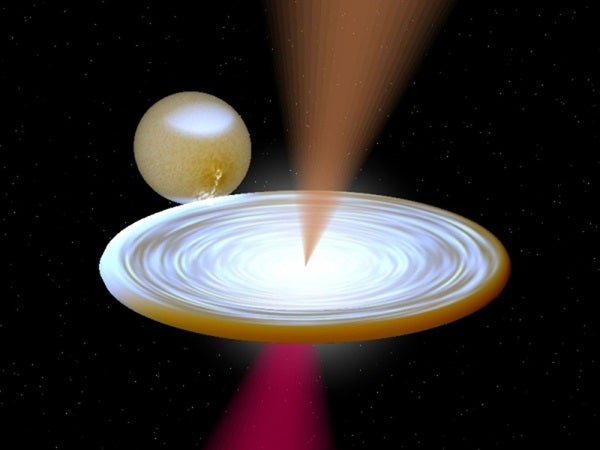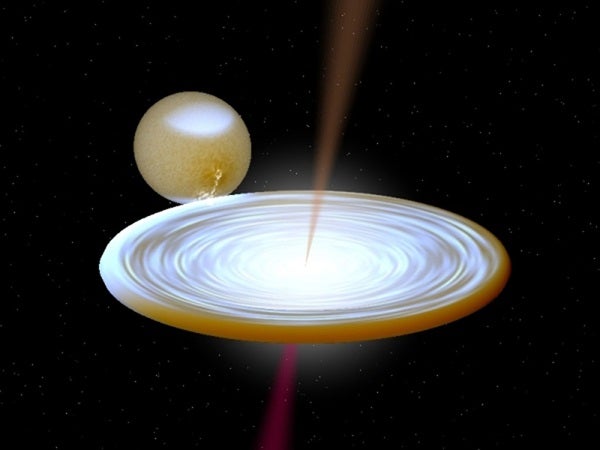close to the speed of light — can have a major impact on the evolution
of their environment. For example, jets from the supermassive black
holes found at the center of galaxies can blow huge bubbles in and heat
the gas found in clusters of galaxies.
Another stunning example
of what black hole jets can do is known as Hanny’s Voorwerp, a cloud of
gas where stars started forming after it was hit by the jet-beam of a
black hole in a neighboring galaxy. These phenomena demonstrate the
importance of research into the way black holes produce and distribute
energy, but until recently, much of this has remained uncertain.
In 2003, it became clear from astronomical observations that there is a connection between the X-ray emission from a black hole and its jet outflow. This connection needs to be explained if scientists want to understand how the black hole engine works. In the first years after this connection was discovered, it seemed that it was the same for all feeding black holes, but soon oddballs were found. These unusual examples still have a clear connection between the energy released in the X-ray emission and that put in the jet ejection. But the proportion differs from that in the “standard” black holes. As the number of oddballs grew, it started to appear that there were two groups of black hole engines working in a slightly different way, as if one were running on petrol and the other on diesel.
For years, astronomers struggled to justify this difference based on the properties of the two groups of black holes, but to no avail. Recently, a step forward was made: A team of astronomers led by Michael Coriat from the University of Southampton in the United Kingdom found a black hole that seemed to switch between the two types of X-ray/jet connections, depending on its brightness change. This suggested that black holes do not necessarily come with two different engines, but that each black hole can run in two different regimes, like two gears of the same engine.
Peter Jonker and Eva Ratti from the SRON have taken an important step forward in the attempts to solve this puzzle. Using X-ray observations from the Chandra X-ray Observatory and radio observations from the Expanded Very Large Array in New Mexico, they watched two black hole systems until their feeding frenzies ended.
“We found that these two black holes could also ‘change gear,’ demonstrating that this is not an exceptional property of one peculiar black hole,” said Ratti. “Our work suggests that changing gear might be common among black holes. We also found that the switch between gears happens at a similar X-ray luminosity for all the three black holes.”
These discoveries provide a new and important input to theoretical models that aim to explain both the functioning of the black hole engine itself and its impact on the surrounding environment.











